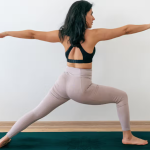Are you the techno-yogi who knows their Bluetooth from their NFD? Do you call up your class playlist from the ether with a swift gesture above their digital assistant who hangs on your every Sanskrit syllable?
High Tech Tools for Yoga Teachers
So what tools can the modern yoga teacher use to help them? Are there high tech answers to those niggling problems we encounter? How do we fill our class with students inspired and ready to learn or do we even step into the virtual?
One of my previous articles looked at apps available on IOS, Microsoft and android devices for students of yoga in general. Here we dig a bit deeper from the teacher’s perspective in the 21st Century!
Sharing the word?
What’s the word? Err, Aummm? No, I mean how do you get the word out to say you have an actual class? Advertising? I don’t mean a scrap of paper hanging in your local newsagent. How about using the net for:
- Your website
- Social media
- Blogs
- Interactions with sites, blogs and other people’s media (drawing them to your own site!)
Say you’ve created the ultimate website which should inspire your students to visit in droves but nothing seems to be happening. What else can you do? You can look into boosting the pull to your website. Get your website guy/girl to look into SEO (search engine optimisation), Adwords or how to make your site more delectable to web spiders and bots!
See Also: How To Market Yourself As A Yoga Teacher
Creating an Interest Base
So how do you put a spark in the collective consciousness? There’s a few ways of inspiring and creating interest: writing a blog, creating a website, social media activity. Your website can be nothing more than a simple place to advertise your classes but it can be other things too.
It can be a library of materials for your students. Audio, video, thoughts and hyperlinks. Your resources can be a valuable asset to the student, reinforcing their learning. Yoga may very well be 99% practice and 1% theory but let’s maximize that 1% to inspire the journey?
It’s also possible to host a whole library of material on your website. This may include documents, audio or full video sequences that you made yourself while holding your selfie stick between your toes. You’ll probably need a decent server and be best friends with that geek programming yogi (either that or deep pockets!). It can be done on a budget though — a lot of tools for such things can be actually free, just add some expertise!
Do we need a physical class?
Well, you would think so, it is yoga after-all! But, does your student have to be actually with you physically? There are options – Skype for example. Some teachers already have these virtual classes for those who live a little far away but still want that personal touch. This gets around the problem of travel and allows for the convenience of practice from home. You can’t adjust or assist the student in anything but vocally, but at least you can give them one-to-one attention.
See Also: How Asaf Hacmon Teaches Yoga at 30,000 Feet
Fully Quantified?
You may have heard of the phrase quantified man some time ago? It’s the idea that you can take all these metrics (info) we can now measure with our phones and Fitbits and turn them into something useful to show how our body is performing! You can measure all sorts of information from the heart beat, blood pressure and weight through to the EEG. This gives a way of measuring either your own or a student’s ‘progress’, though how you define this is largely up to you!
Keep On Learning!
So, you’ve done the 200-hour training — but the learning goes on, right? Don’t forget there’s lots of apps out there that can refresh your mind with:
- Pose names, Sanskrit too!
- Anatomy, what was that muscle called!?
- Timing – its interesting to play with set timing vs breath, for vinyasa.
- E-Courses (say, YogaLondon has a few of those Philosophy courses on tap!)
What About In Class?
How about music? You could just bring in that ghetto blaster, or you could plug in your phone for mp3. Using a service like Spotify allows you to have access to large amount of background music for your class. Build a playlist and you could time those poses and sequences perfectly. Or be more random, and put it on shuffle, only jumping in for that perfect Savasana track at the end? There are a few things to remember:
- You will need a public performance license for playing music as an instructor.
- You can bet your bottom dollar that the place the gym/hall is situated will be deplete from mobile phone signal (yeah, they build yoga studios in Faraday cages, didn’t you know?). So, as far as online services go – click the offline availability button… okay?
- Premium service obviously gives you much more music and options
Sound effects?
I mentioned timing above but alternatively rather than music you could have some kind of sound pulse playing during class. The point being to create regularity in breath or, in sequence. This sound could simply be a synthesised sound, breath or filtered beat. If the cycle of sound is timed just right this can be a very useful tool in class.
So, that’s my take on the 21st Century yoga teachers bag of tricks… what other tools could you use in your classes and web ventures?
See Also: No Tweets in Tree Pose! 4 Ways To Take Back Control Of Your Practice













